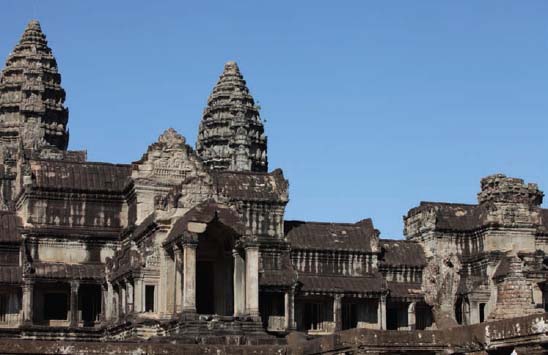The Medieval World, C. 400–1300India and Southeast Asia |
What does a Hindu temple look like? |
Hindu temples are one of the primary examples of Hindu architecture in India and Southeast Asia. They are usually built of cut rock, and although there is a great deal of stylistic diversity, are generally placed within two categories: northern and southern style.
Hindu temples are raised on a podium (somewhat like an Etruscan temple), called a plinth. Temples in the northern style feature a large tower in the shape of a beehive, called shikhara (which means “mountain peak”). Atop the tower is a rounded form known as an amalaka because of the similarly shaped amala fruit. These amalakas are used to decorate lower portions of the shikhara as well. The halls of a northern-style temple have a series of halls called mandapas, which lead to the garbhagriha, an inner sanctuary used to house a sacred image. The halls are themselves decorated with smaller, tower-like roofs. An example of a northern-style Hindu temple is the Kandarya Mahadeva temple in Khajuraho, India, which was built around 1000 C.E.
Southern-style Hindu temples feature a pyramid-like tiered tower called a vimana, and this is topped with a round capstone. The halls of a southern-style temple also lead to an inner chamber, but have flat roofs and pillared mandapas. An example of a southern-style Hindu temple is the Rajarajeshvara Temple in Thanjavur, India, which was built around 1010 C.E.

Angkor Wat, a UNESCO Heritage site, is a large Hindu temple complex located in Cambodia in Southeast Asia and was built between the ninth and fourteenth centuries.
